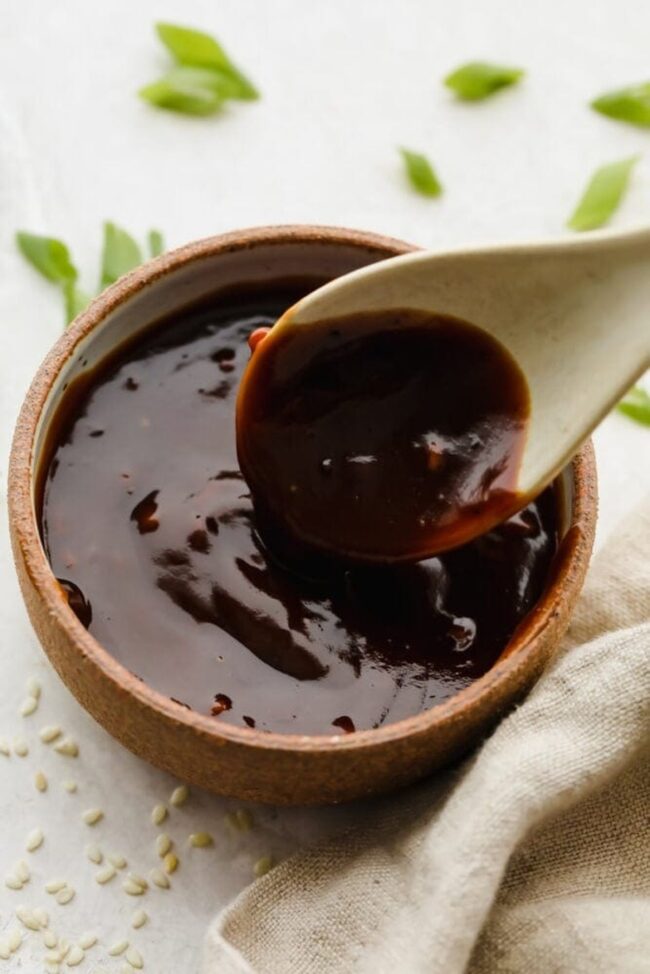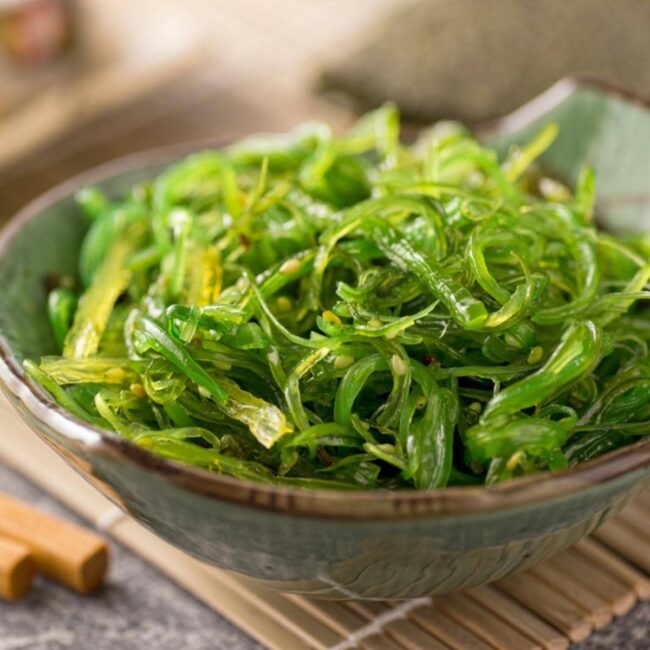10 Rich Fish Sauce Replacements for Bold Taste
Fish sauce contributes a deep, fermented umami quality essential to Southeast Asian cooking.
When it’s not available, a combination of salty, umami-rich liquids can recreate its complexity.
Some substitutes enhance the oceanic brininess, whereas others soften the intensity with soy-based alternatives.
The ideal replacement should preserve the balance of salt and umami.
What Is Fish Sauce?
A versatile ingredient, fish sauce adds depth to many dishes.
Known for its salty taste and unique umami flavor, this sauce enhances recipes with a savory richness that makes meals unforgettable.
Its distinct flavor comes from fermenting anchovies with salt, a process that breaks down the fish and releases natural compounds responsible for the umami taste (called the fifth basic taste).
Varieties of fish sauce exist, each differing in aroma and quality based on factors like the type of fish used or how long it ferments.
Trying different brands can help find one that suits individual tastes best when cooking.
Using this flavorful condiment will elevate dishes while allowing creativity in your culinary adventures.
Reasons to Replace Fish Sauce
Finding a substitute for fish sauce can cater to various dietary needs, health concerns, or allergies.
Individuals following vegan or vegetarian diets avoid fish sauce due to its animal origin.
Allergies to seafood also make it essential for some people to seek alternatives that mimic the flavor without causing harm.
Reducing sodium intake serves as another reason; many are mindful of their salt consumption because of blood pressure issues.
Choosing a lower-sodium alternative keeps meals tasty while being health-conscious.
Exploring these substitutes opens up new culinary experiences and ensures flavorful dishes suitable for all diners at your table.
Soy-Based Substitutes
Soy-based alternatives provide umami-rich replacements for fish sauce. These options enhance your dishes without using seafood.
Soy Sauce
A vegan soy sauce serves as a great alternative, made without any animal products.
This condiment offers a rich umami flavor similar to fish sauce, adding depth to various dishes.
Crafted from fermented soybeans, it enhances the taste of meals while providing versatility in cooking.
Adjusting saltiness may be necessary; using slightly more than what recipes suggest for fish sauce helps achieve balance.
Caution is essential for those sensitive to gluten since many traditional options contain wheat.
Exploring different brands can lead you to find one that fits your dietary needs perfectly.
Tamari
Tamari serves as an excellent substitute for fish sauce, especially for those avoiding gluten.
This flavorful sauce comes from the miso-making process and closely resembles soy sauce in taste.
With a rich umami flavor, it has less saltiness compared to traditional soy sauces.
A simple swap of equal amounts allows Tamari to replace fish sauce seamlessly in recipes.
Adjusting the saltiness or diluting with water can help achieve the desired flavor balance in your dish.
Enjoy creating delicious meals while accommodating dietary needs!
Hoisin Sauce
Hoisin sauce offers a tasty alternative to fish sauce.
This condiment features fermented soybeans, vinegar, sugar, and a blend of spices.
A thicker consistency and sweeter taste give Hoisin its own character while still providing that rich umami flavor.
It shines in stir-fries, marinades, and many Asian recipes.
Adjusting the recipe can enhance the overall taste; starting with less Hoisin allows for fine-tuning to achieve just the right balance of flavors without overwhelming sweetness.
Keeping an eye on added sugar ensures dishes remain well-rounded and delicious.
Seaweed-Based Substitutes
Seaweed serves as a fantastic alternative to fish sauce, offering a similar savory taste.
Kombu stands out as dried seaweed packed with natural glutamates that enhance umami flavor.
Soaking kombu in water for several hours creates an excellent substitute; the resulting liquid adds a gentle umami touch to lighter dishes.
For those seeking something bolder, preparing a broth with various seaweeds like wakame and nori delivers richer flavors.
After soaking and boiling these seaweeds together, straining the mixture yields a hearty broth perfect for many recipes.
Ready-made seaweed condiments also exist for added convenience; they can easily replace fish sauce in your meals while introducing unique tastes that may require some seasoning adjustments.
Mushroom-Based Substitutes
A fantastic alternative to fish sauce comes from shiitake mushrooms.
Known for their savory flavor, these mushrooms can easily mimic the taste of fish sauce in various recipes.
Dried shiitake mushrooms provide a stronger taste than fresh ones, enhancing the overall dish.
To create a substitute, soak one cup of dried shiitake mushrooms in two cups of hot water for 20 to 30 minutes until they soften.
Afterward, strain the liquid into another container to obtain a rich mushroom broth.
Mixing two tablespoons of soy sauce with each cup of this broth yields an umami-rich blend that can elevate your meals while keeping them flavorful and satisfying.
Adjusting ingredient amounts will help suit personal taste preferences since this mixture may have a salty kick.
Sweet and Tangy Substitutes
Looking for a sweet and tangy twist? Try these ideas to mimic fish sauce's depth.
Worcestershire Sauce
A mix of Worcestershire sauce and molasses can serve as a great alternative to fish sauce.
Sweetness combined with tanginess creates a flavor that many enjoy.
Adding molasses enhances the sweetness, deepening the overall taste without overwhelming other ingredients.
For best results, begin with equal parts of each and adjust according to personal taste preferences.
This simple combination makes it easier for anyone looking to substitute fish sauce in their cooking while maintaining delicious flavors.
Worcestershire sauce has gained popularity not only for its versatility but also for its rich flavor profile that complements various dishes well.
Vinegar
For a tangy taste similar to fish sauce, vinegar serves as a great base.
Rice vinegar offers a gentle flavor, while white vinegar delivers more intensity.
Blending the vinegar with molasses or sugar adds sweetness that mimics fish sauce perfectly.
Adjustments should be made gradually based on your personal taste preferences.
This method allows for flexibility and creativity in cooking, ensuring each dish suits individual palates.
Experimenting can lead to delightful surprises in your culinary creations.
Lemon Juice
A tangy kick comes from lemon juice, which serves as an excellent choice for enhancing dishes.
Mixing it with soy sauce creates a savory flavor similar to fish sauce.
Sweetness can be introduced by adding a small amount of sugar, balancing the taste perfectly.
Adjustments allow for finding the right blend that matches your desired flavor profile.
The focus remains on discovering a versatile alternative that clearly replicates the essence of fish sauce while maintaining confidence in its use in various recipes.
Tamarind
Tamarind serves as a fantastic alternative to fish sauce.
This fruit delivers a distinct sour and tangy taste, available in forms like paste, concentrate, or block.
Combining tamarind paste with water creates the base for your substitute.
Soy sauce adds richness and depth to the mixture.
Adjusting sweetness can be accomplished by adding sugar or rice vinegar based on personal preference.
Taste-testing helps ensure the perfect flavor balance is achieved before using it in dishes.
Other Replacements with Umami Note
Many ingredients can mimic this savory taste, which is primarily linked to glutamate, an amino acid present in various foods.
Nutritional yeast stands out as a great vegetarian option; it offers a nutty flavor and is rich in glutamates.
Soy sauce serves as another effective substitute, known for its versatility and high concentration of umami; just keep its saltiness in mind when using it.
Miso paste also delivers intense umami with its fermented soybeans but should be used sparingly due to its strong taste.
Fish Sauce in Different Cuisines
Culinary adventures often benefit from the inclusion of fish sauce, known for its salty and savory depth.
This ingredient plays a key role in many dishes across Southeast Asia, such as Pad Thai and Pho.
Beyond the region, Japanese and Chinese cuisines also feature their own versions of fish sauce in stir-fries and broths, delivering that essential umami flavor.
Ancient Romans had a similar condiment called Garum made from fermented seafood; it served as a foundation for flavor much like modern fish sauces today.
For those with dietary restrictions or preferences for plant-based options, coconut aminos serve as an excellent substitute while still providing that desirable salty taste in various recipes like curries or marinades.
Discovering this versatile condiment can elevate meals across many culinary traditions.
Making Homemade Fish Sauce Substitutes
Creating homemade substitutes for fish sauce can enhance your meals while catering to dietary needs.
For a seafood flavor, using minced anchovy or anchovy fillets offers an effective option.
Blend 4 to 5 fillets with 2 cups of water and one clove of minced garlic, then simmer this mixture for about half an hour before straining the liquid.
Shrimp paste serves as another flavorful base; combine one tablespoon with a cup of water and a teaspoon of sugar, simmering for around 15 minutes before straining.
A vegan alternative features liquid aminos mixed with finely chopped onion and garlic. Let it sit for about twenty minutes after combining a quarter cup of liquid aminos with two tablespoons each onion and garlic.
Tips for Using Fish Sauce Substitutes
Finding a substitute for fish sauce can enhance your cooking experience.
Various alternatives exist, each offering unique flavors.
Soy sauce stands out as a common choice, easily found in most kitchens and suitable for many recipes.
For those seeking vegan options, miso paste or tamari provide excellent flavor without animal products.
Sodium content plays an important role; low-sodium alternatives like coconut aminos or homemade vegetable broth mixed with sea salt can keep dishes tasty without overwhelming saltiness.
Experimentation is key; trying different substitutes will help discover the right fit for any meal while keeping it delicious and satisfying.









